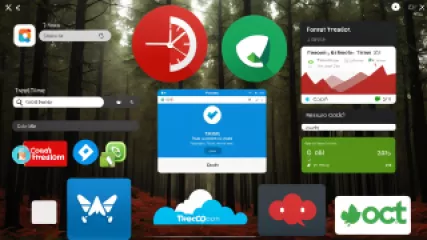Top 10 Online Tools for Procrastination Help
Introduction:
Procrastination is a common challenge that many individuals face in their lives. It can hinder productivity, cause stress, and lead to missed opportunities. However, with the advancement of technology, there are now numerous online tools available to help people overcome procrastination and improve their time management skills. In this article, we will explore the top 10 online tools that can provide procrastination help and assist you in avoiding procrastination.
1. Focus@Will
If you find it difficult to concentrate on tasks, Focus@Will might be the perfect tool for you. This online service provides curated playlists of instrumental music that are scientifically optimized to enhance focus and productivity. By listening to these specialized tracks, you can create an optimal environment for deep work and minimize distractions.
2. RescueTime
RescueTime is a powerful time-tracking tool that helps you understand how you spend your time online. It provides detailed reports and analytics on your digital habits, allowing you to identify time-wasting activities and make more informed decisions about how you allocate your time. With RescueTime, you can set goals, block distracting websites, and stay accountable for your online behavior.
3. Trello
Trello is a popular project management tool that can help you organize your tasks and stay focused. It uses a visual interface with boards, lists, and cards to help you break down complex projects into manageable steps. You can create to-do lists, set deadlines, and collaborate with others, making it an ideal tool for both personal and professional use.
4. Forest
If you struggle with staying off your phone or other digital distractions, Forest is an excellent solution. This unique app allows you to grow a virtual forest by staying focused and not using your phone for a set period. As you resist the temptation to check social media or browse the internet, your virtual tree grows. Forest gamifies the process of staying focused and provides a tangible reward for your efforts.
5. Focus Booster
The Pomodoro Technique is a popular time management method that involves working in short bursts of intense focus, followed by short breaks. Focus Booster is an online tool that helps you implement this technique effectively. It tracks your work sessions, reminds you to take breaks, and provides insights into your productivity patterns. By incorporating the Pomodoro Technique into your workflow, you can maintain high levels of motivation and overcome procrastination.
6. Todoist
Todoist is a feature-rich task management app that allows you to create and organize your to-do lists effortlessly. With its intuitive interface and powerful features like due dates, reminders, and priority levels, Todoist ensures that you stay on top of your tasks and deadlines. By breaking down your projects into smaller, manageable tasks, you can reduce overwhelm and increase your productivity.
7. Habitica
Habitica transforms your daily tasks and habits into a role-playing game. By completing your real-life tasks, you earn experience points and rewards for your in-game character. This gamified approach to productivity adds an element of fun and motivation to your daily routine, making it easier to overcome procrastination and develop positive habits.
8. Cold Turkey
Cold Turkey is a powerful website and application blocker that allows you to temporarily restrict access to distracting websites, apps, and games. With its customizable blocking features, you can create specific schedules or block certain sites altogether. By eliminating digital distractions, Cold Turkey helps create an environment conducive to focused work and increased productivity.
9. Noisli
Noisli is an online tool that provides a collection of background noises and ambient sounds designed to enhance focus and concentration. Whether you prefer the sound of rain, waves, or a coffee shop, Noisli allows you to create custom soundscapes that can drown out distractions and create a soothing atmosphere for work.
10. Habitify
Habitify is a habit tracker app that helps you build and maintain positive habits while eliminating procrastination. With its intuitive interface and habit streaks feature, Habitify motivates you to stay consistent with your goals. By tracking your progress and providing insights into your habits, this app empowers you to make lasting changes and overcome procrastination.
Summary:
Overcoming procrastination is no easy task, but with the help of these top 10 online tools, you can take control of your time and increase your productivity. Whether it's through music, time tracking, project management, or gamification, these tools offer a variety of approaches to address the challenge of procrastination. Experiment with different tools and find the ones that work best for you. Remember, the key is to take action and implement strategies consistently. With the right tools and determination, you can beat procrastination and achieve your goals.






